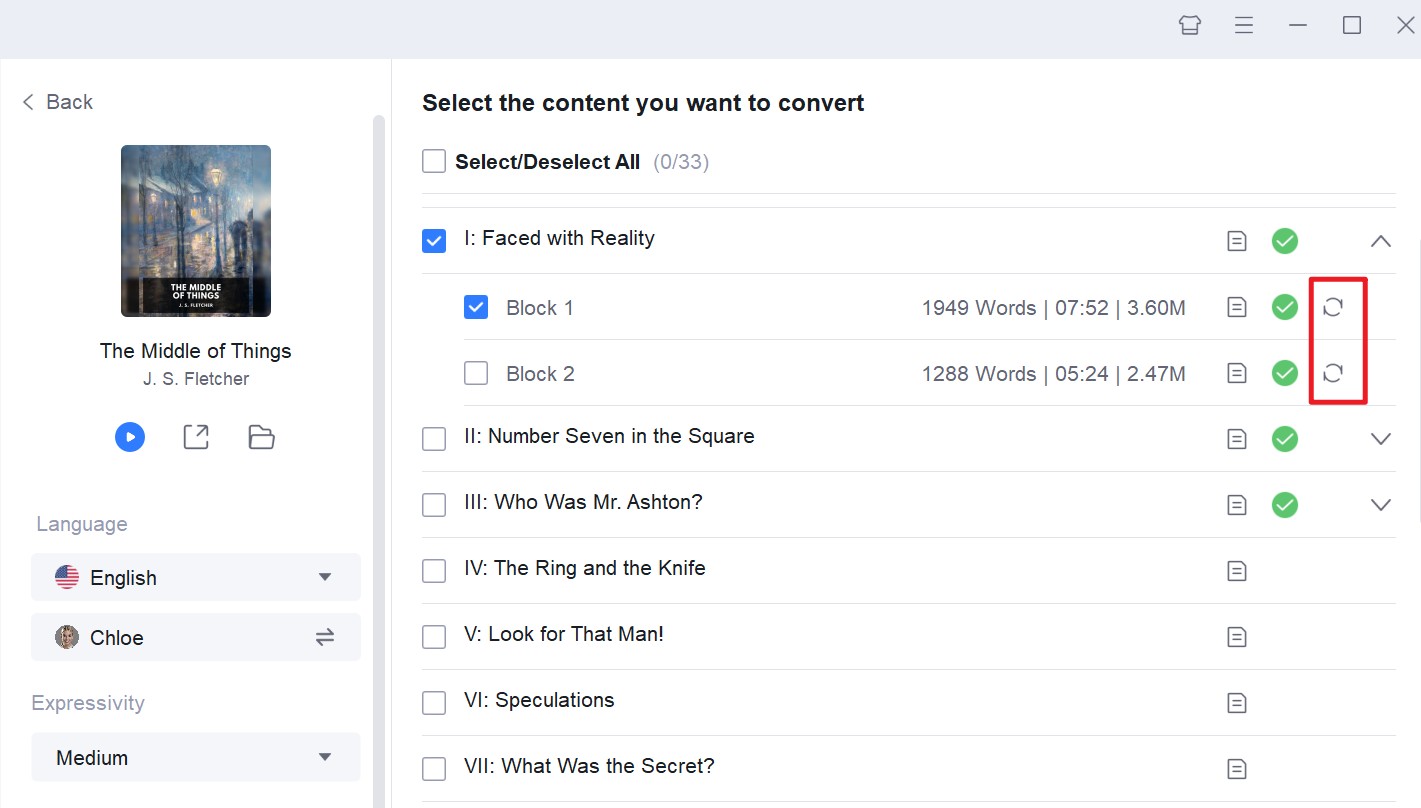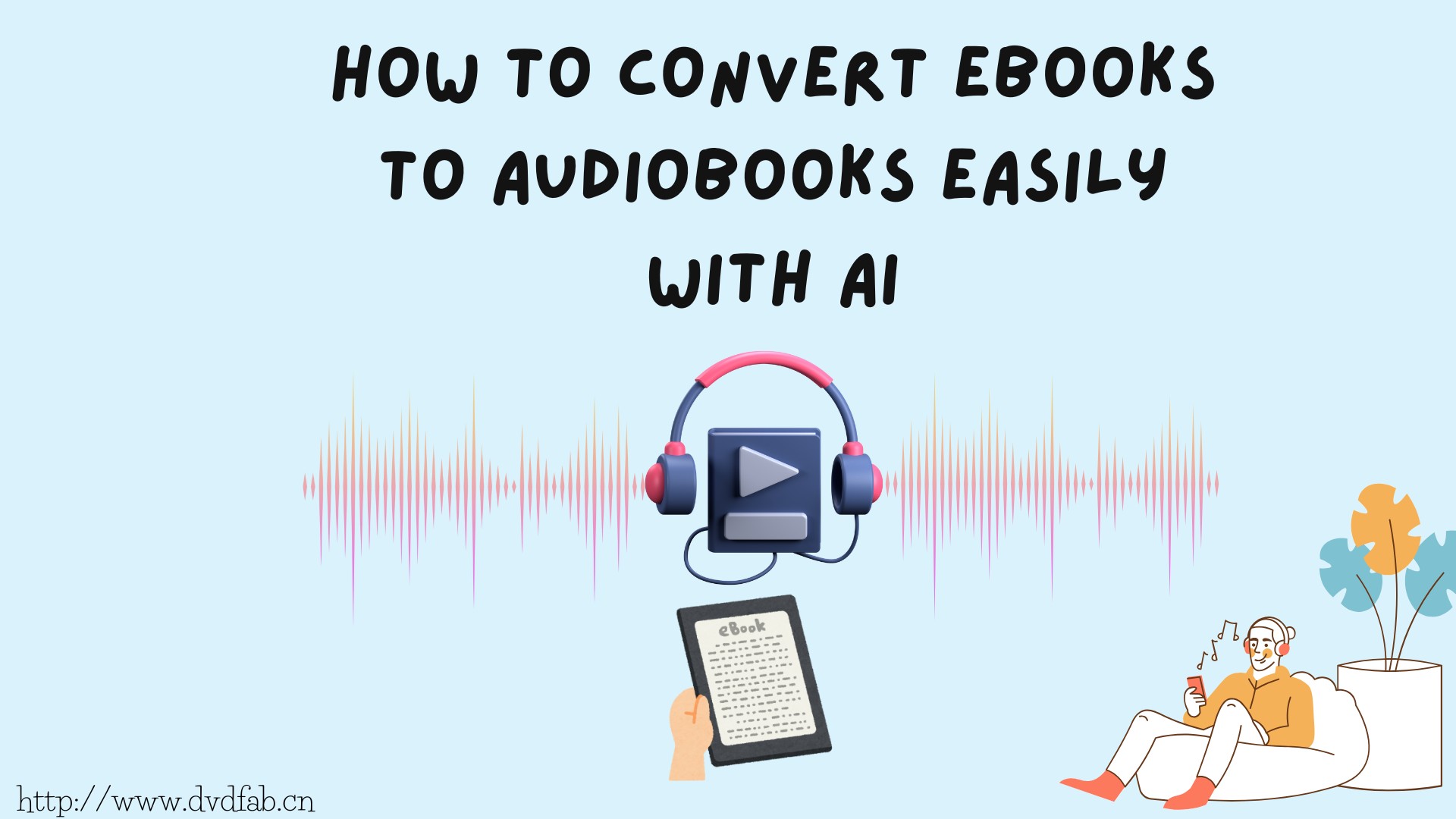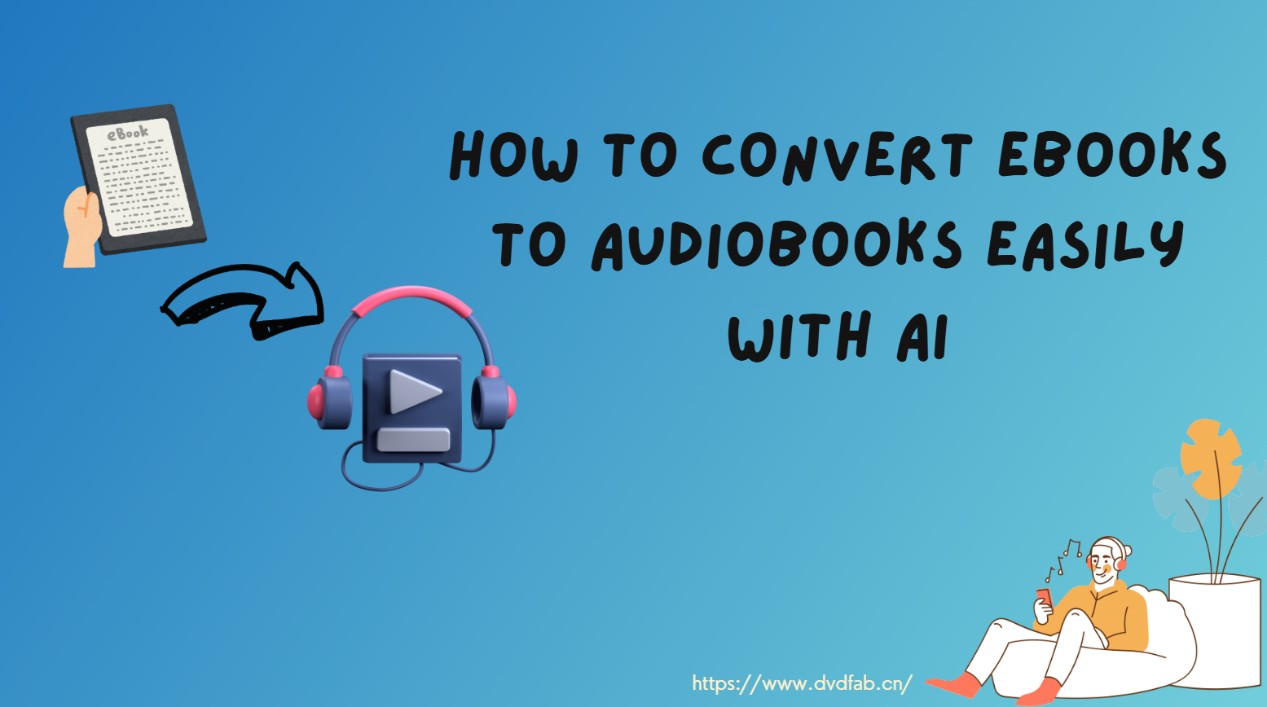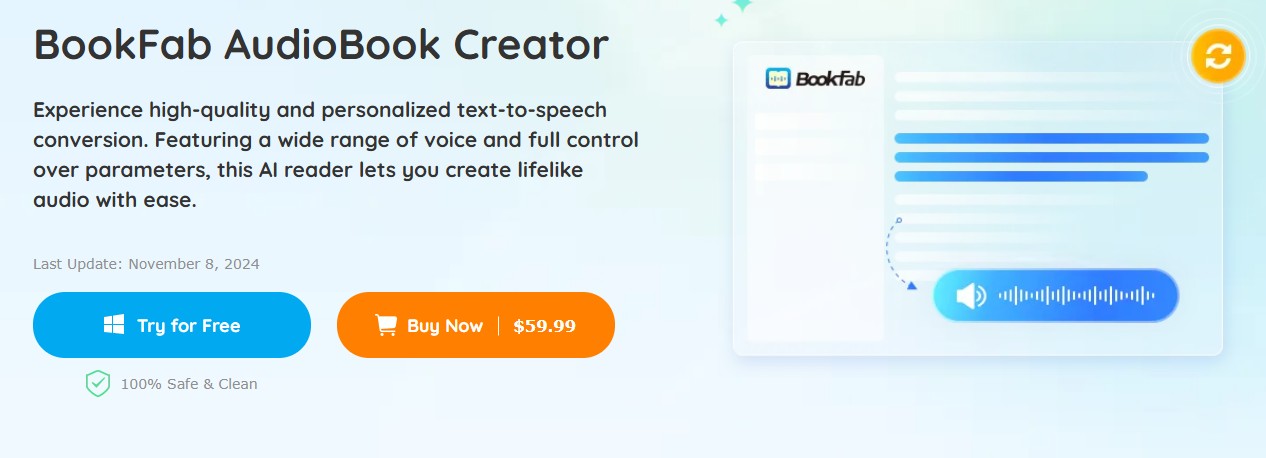Why Block-Based Architecture Matters in Converting eBooks to Audiobooks
Summary:Effortlessly convert massive ebooks into polished audiobooks with BookFab’s Block system. Discover block splitting and future-ready audio workflow.
Table of Contents
Introduction
The rise of audiobooks has dramatically reshaped how readers and learners access content, offering unparalleled convenience and new audience reach. But converting an entire ebook—sometimes hundreds of thousands of characters—into a seamless, natural-sounding audiobook isn’t as simple as sending text to a TTS engine.

At BookFab, our mission is to bridge the gap between massive ebook content and high-quality audio production, ensuring every step of the process is optimized for realism, efficiency, and control. One central innovation in our solution is the concept of the Block: a flexible, intelligent processing unit that brings together the best of text structure analysis and modern TTS workflow.
Wondering why not just stick to sentences or paragraphs? Or how you can generate hundreds of chapters in parallel without losing natural context? Block-based architecture is the answer—and in this article, we’ll show you exactly how it works from the inside out.
Text Processing Structure
Successfully converting an ebook into high-quality audio requires more than just transforming text into speech. It demands a thoughtful approach to structure, context, and workflow—especially when tackling thousands of pages at once. So, how does BookFab break down complex ebooks into audio-ready formats while preserving meaning and flow?
Let’s break down the layered process that makes automated audiobook creation reliable and robust.
Chapter and Paragraph Handling
Before any audiobook synthesis can begin, BookFab first analyzes the ebook’s structural hierarchy. Every file is parsed to distinguish chapters, subchapters, and standard paragraphs—each of which plays a unique role in guiding the flow and coherence of the audio output.
Accurate chapter and paragraph detection is crucial for converting ebooks into high-quality audiobooks. It ensures the narrative pace, context, and logical breaks are preserved during synthesis.
To accomplish this, BookFab uses language-aware parsing algorithms. For most standard novels, chapter titles, numbers, or distinct formatting markers are used to split the text. Within each chapter, the system further divides content into paragraphs, but also tracks embedded metadata such as section breaks, quotes, and lists. This multi-level parsing not only guides natural pauses and intonation but also serves as the foundation for the next processing layer: block creation.
If you’ve ever tried to feed a long chapter directly into a TTS tool, you’ll know that losing paragraph markers results in audio files that sound monotonous and robotic. By respecting these textual boundaries, BookFab ensures a listening experience that feels organic and easy to follow.
I know exactly how you feel — I've been there myself. When even a minor structural oversight ruins the flow of a good story, it’s more than just a technical flaw; it diminishes the whole listening pleasure.
Why Block Matters
You might wonder: Why not simply process ebooks sentence by sentence or paragraph by paragraph? While this approach is straightforward, it rarely delivers optimal results when generating audiobooks at scale. Excessively small units cause unnatural speech flow and introduce awkward pauses, while oversized chunks may exceed TTS input limits or dilute contextual continuity.
The Block concept was developed to strike the perfect balance between context and efficiency.
A "Block" is a flexible unit that groups logically connected sentences (sometimes spanning paragraphs, but never splitting sentences). Each Block is carefully sized to remain under service-specific character or byte limits, while still providing sufficient context for natural-sounding narration.
Having tried both extremes, many teams soon realize that neither sentence-level granularity nor overly large segments can satisfy both the technical and listening needs. With blocks, BookFab can optimize request numbers, streamline error handling, and enhance audio consistency—all while ensuring natural transitions and a more engaging user experience.
BookFab Block Workflow
BookFab’s block-based workflow is designed to streamline audiobook automation—no matter the ebook’s length or complexity. Here’s how the end-to-end process looks in practice:
- Hierarchical Parsing:The system first dissects the ebook into chapters and paragraphs, capturing all formatting and structural cues.
- Block Creation:Sentences are grouped into blocks, with each block kept within language-appropriate character or byte limits. Sentence integrity is always maintained—no splitting in the middle.
- Distributed Processing:Blocks are submitted in parallel to multiple TTS engines. This not only accelerates synthesis but maximizes resource utilization across distributed servers.
- Result Assembly:Once audio files for all blocks in a chapter are generated, BookFab merges them (in block order) to form seamless chapter-level audio. If you update a block later, only that section needs regeneration—no need to redo the entire chapter.
Key Takeaways:
- Blocks provide the minimal unit for both initial conversion and future updates.
- Parallel block processing enables substantial time savings on long books.
- Fine-grained block management simplifies error handling, versioning, and quality assurance.
You’re not alone in facing the pains of merging hundreds of audio snippets or reprocessing massive files. BookFab’s structured workflow handles the tedium—so you can focus on delivering rich content.
Block Splitting Principles
Creating high-quality audiobooks from lengthy ebooks is not just about transforming text into speech—it's also about knowing exactly where to “cut” the text for synthetic narration.
Poorly chosen splits can disrupt narrative flow, cause technical errors, or make future updates cumbersome. BookFab addresses these pain points by enforcing clear, product-driven principles for block creation, purposefully tuned for language differences and operational best practices.
Language-Based Character Limits
BookFab has established strict block size standards based on real-world deployment experience—not just theoretical API maximums. This ensures both technical robustness and a natural listening experience.
By default, each Block in BookFab is capped at 9,000 characters for English and 3,000 for Japanese.
These settings are the result of rigorous testing and are designed to prevent overload errors, keep synthesis responsive, and maintain high-quality audio throughout the conversion process.
Why such differences? English blocks can be larger because of more compact encoding and language structure. Japanese, on the other hand, uses multi-byte characters and often needs smaller cuts to optimize performance and keep within safe memory limits.
For mixed-language books or new TTS scenarios, these block thresholds can be tuned as needed—but the default values give most projects full stability out of the box.
Maintaining Sentence Integrity
Technical boundaries are only useful if they don't disrupt the listening experience. That’s why BookFab follows a strict rule: a Block must never split a sentence.
If adding another sentence would exceed the block size limit, it rolls over to the next block wholesale—never cutting a sentence in half.
This approach might seem obvious, but in bulk automation it's critical. Splitting mid-sentence can result in jarring audio artifacts, unnatural pauses, or even synthesis errors if the TTS engine isn't expecting fragmented data. By preserving whole sentences in each block, BookFab keeps both narration flow and semantic clarity intact.
Chapter Boundary Restrictions
BookFab also requires that Blocks never cross chapter boundaries. In practice, this means the final block in a long chapter might be much smaller than the standard size, but it will always contain text from that chapter only.
For instance, if a Japanese chapter contains 7,500 characters:
- Block 1: 3,000 characters
- Block 2: 3,000 characters
- Block 3: 1,500 characters
No matter how small that last block, it won’t merge content from the next chapter. This rule supports consistent audio file organization (one chapter per audio file) and vastly simplifies the update process—changes to one chapter never spill over into the next.
Block Merging & Updates
After individual blocks are processed and transformed into audio files, the task doesn't end there. A smooth, user-friendly audiobook requires that all those segments be merged with precision—and updated efficiently whenever revisions are needed. BookFab’s merging and update strategies ensure that the final listening experience is cohesive, maintainable, and uniquely adaptable for large-scale production.
Generating Chapter Audio Files
Once all blocks for a specific chapter have been synthesized, BookFab automatically merges them in sequential order. Each block’s audio is stitched together without gaps or overlaps, resulting in a single, continuous chapter audio file.
This method replicates the intended pacing, transitions, and pauses originally marked in the text, providing listeners with a seamless, story-driven experience.
By grouping audio files at the chapter level, BookFab simplifies navigation, playback, and distribution—whether users consume content as one long listening session or revisit specific sections.
Efficient Block Reprocessing
One of the distinct advantages of block-level processing is the ability to update just a portion of the audiobook—without redoing the entire chapter or book.
If a pronunciation needs correction or a different voice must be substituted for a specific scene, only the relevant block is regenerated.

BookFab then:
- Replaces the old block audio in the chapter,
- Quickly re-merges the chapter as a new audio file,
- Updates all corresponding JSON index data to ensure that players and platforms always reference the latest audio.
This makes error correction and iterative improvements fast and reliable, dramatically reducing the workload compared to full-chapter or full-book reprocessing.
Advantages of Block Design
The block-based design philosophy in BookFab is not just a technical preference—it’s a strategic choice that unlocks greater efficiency, audio quality, and operational flexibility. Here’s how block management transforms bulk audiobook generation into a streamlined, scalable workflow.
Speed and Parallel Processing
By partitioning content into discrete blocks, BookFab enables true parallel processing. In practice, BookFab’s production pipeline supports processing up to 3 blocks simultaneously, which significantly boosts overall generation speed—even for large and complex books.
Instead of waiting for an entire chapter or book to be processed in sequence, the system distributes three blocks at a time to TTS engines. As soon as one finishes, the next enters the queue, ensuring maximum resource utilization. This architecture shrinks total processing time and avoids workflow bottlenecks, making it feasible to generate full-length audiobooks far more efficiently than single-threaded approaches.
Improved Context Continuity
One of the main pitfalls of naive sentence-by-sentence synthesis is choppy, disjointed audio output. BookFab’s blocks are tuned to preserve context—not too short to lose the thread, not too long to exceed system limits.
Each block contains enough context for the TTS engine to maintain natural prosody and coherent expression across sentences and paragraphs. This balance greatly enhances the listener’s experience, as transitions feel smooth and the story flows uninterrupted from block to block.
Conclusion & Outlook
By introducing the Block as an intelligent intermediate layer, BookFab transforms the process of converting ebooks into audiobooks—making bulk conversion faster, more reliable, and easier to manage. The principles behind block design ensure not only technical stability but also high-quality listening, with seamless merging and rapid localized updates.
Looking ahead, BookFab’s block system will continue to evolve. Features like dynamic block sizing, and multi-voice/audio-track support are on the horizon, promising even greater flexibility and richer user experiences. As the audiobook industry continues to grow, BookFab is committed to leading with innovation, scalability, and creator-friendly tools for every kind of content.



